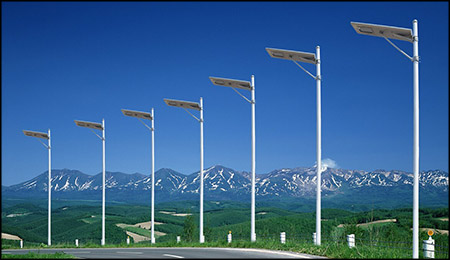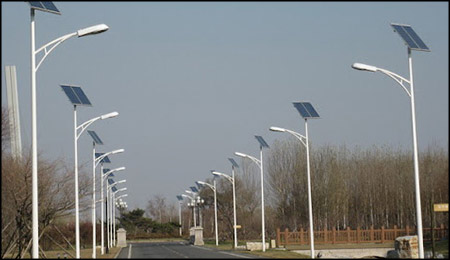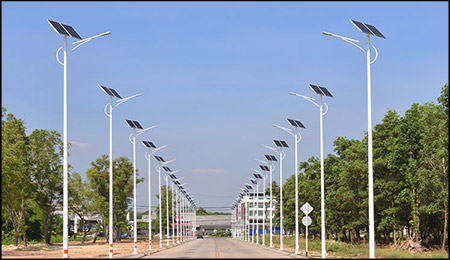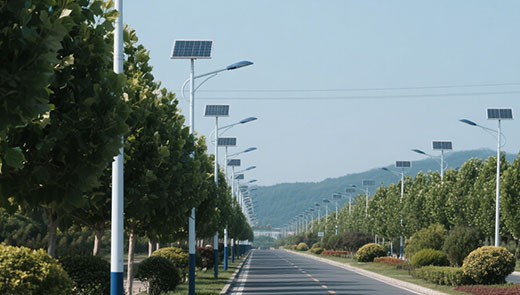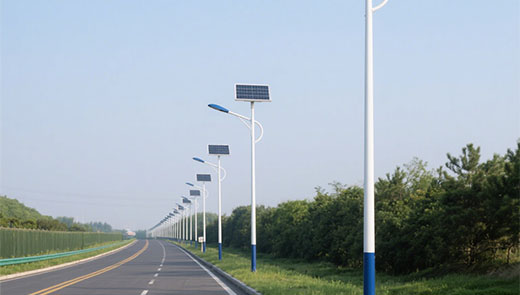Choosing the Right Power for Solar Street Lights: A Comprehensive Guide
Jul 22, 2024
Selecting the appropriate power for solar street lights is crucial to ensuring optimal performance, energy efficiency, and cost-effectiveness. The power of solar street lights, typically measured in watts, determines their brightness and coverage area. To make an informed decision, several factors must be considered, including the specific application, location, lighting requirements, and environmental conditions. This article provides a detailed guide on how to choose the right power for solar street lights from various aspects.
Wattage and lumens are two key metrics in selecting the power of solar street lights.
Choosing the right power for solar street lights involves a comprehensive evaluation of lighting requirements, location, battery capacity, solar panel efficiency, cost considerations, and energy management systems. By carefully considering these factors, you can ensure that your solar street lights provide optimal illumination, energy efficiency, and cost-effectiveness, enhancing the safety and aesthetics of the illuminated area.
1. Assessing Lighting Requirements
The primary step in choosing the right power for solar street lights is to assess the specific lighting requirements of the area.- Illumination Level: Determine the required illumination level based on the location. For instance, residential streets may need lower illumination compared to busy highways or commercial areas.
- Coverage Area: Identify the size of the area that needs to be illuminated. Larger areas will require higher-powered lights to ensure adequate coverage and brightness.
- Purpose of Lighting: Consider the purpose of the lighting. Is it for security, enhancing visibility for drivers and pedestrians, or aesthetic purposes? Each purpose may have different power requirements.
2. Understanding Wattage and Lumens
Wattage and lumens are two key metrics in selecting the power of solar street lights.
- Wattage: Wattage indicates the power consumption of the light. Higher wattage generally means brighter light, but it also means higher energy consumption.
- Lumens: Lumens measure the total amount of visible light emitted by the light source. A higher lumen output indicates a brighter light. It is important to balance wattage and lumens to achieve the desired brightness without excessive energy consumption.
3. Evaluating the Location
The geographical location and environmental conditions play a significant role in determining the power requirements of solar led street lights.- Sunlight Availability: Assess the average daily sunlight hours in the location. Areas with less sunlight may require higher-powered lights with larger solar panels and batteries to store sufficient energy.
- Weather Conditions: Consider the local weather conditions, such as cloudy days, rain, and snow. In regions with frequent overcast conditions, higher-powered lights and efficient solar panels are essential to maintain performance.
- Shading: Identify any potential shading obstacles, such as trees or buildings, that could affect the solar panels' ability to capture sunlight. Shaded areas may need higher power to compensate for reduced energy collection.
4. Battery Capacity and Efficiency
The capacity and efficiency of the battery are critical in ensuring that the solar street lights can operate throughout the night.- Battery Capacity: Choose a battery with sufficient capacity to store the energy needed to power the lights for the entire night. Higher-powered lights will require batteries with larger capacities.
- Battery Type: Consider the type of battery used. Lithium-ion batteries are commonly preferred for their high energy density and longer lifespan compared to other types.
- Charge Efficiency: Ensure the battery has a high charge efficiency to maximize energy storage during sunny periods and reduce energy loss.
5. Solar Panel Size and Efficiency
The size and efficiency of the solar panel directly impact the performance of the solar outdoor lights.- Panel Size: Larger panels can capture more sunlight, which is beneficial for higher-powered lights that require more energy.
- Panel Efficiency: High-efficiency solar panels convert more sunlight into electricity, improving overall performance. Consider panels with advanced technologies like monocrystalline or polycrystalline silicon.
- Tilt and Orientation: Optimize the tilt and orientation of the solar panels to maximize sunlight exposure throughout the day.
6. Cost Considerations
Budget constraints are an important factor in choosing the power of solar street lights.- Initial Investment: Higher-powered solar street lights with larger batteries and panels typically have a higher upfront cost. However, they may offer better performance and longer lifespans.
- Long-Term Savings: Consider the long-term savings from reduced energy bills and maintenance costs. Efficient and high-quality components can result in lower operational costs over time.
7. Energy Management System
An efficient energy management system can optimize the performance of solar road lights.- Smart Controls: Implement smart controls such as motion sensors, dimming features, and timers to adjust the light output based on actual needs. This can reduce energy consumption and extend battery life.
- Remote Monitoring: Consider solar street lights with remote monitoring capabilities to track performance, detect faults, and manage maintenance remotely.

